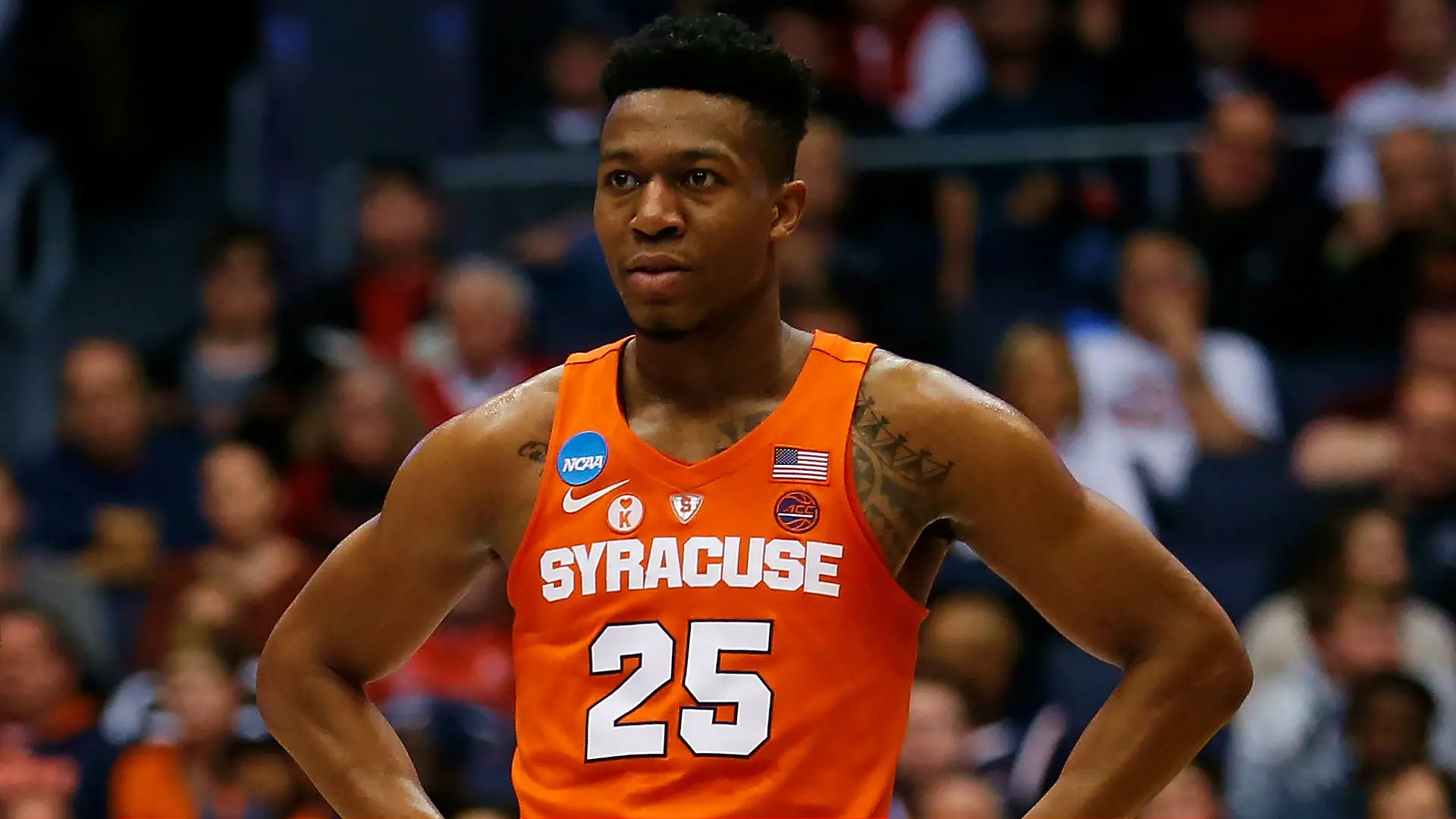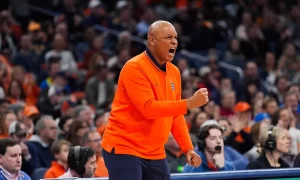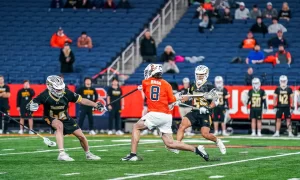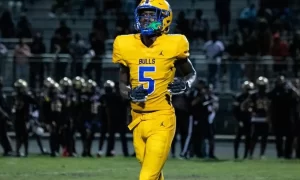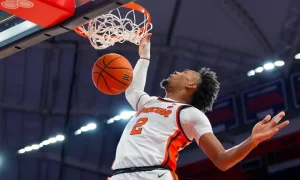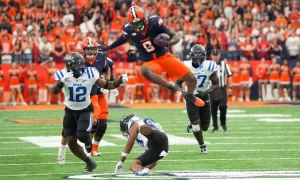Exactly one year and two days ago, we were talking about what Tyus Battle had to prove at the NBA Draft combine, who he had to outperform and how his prospects looked after the combine was over. We won’t be talking about any of that this year.
Battle and the rest of the college basketball/NBA world found out that the former Syracuse star had not received his second straight invite to the combine later this month.
Former Syracuse player Tyus Battle not invited to NBA combine. Will participate in G-League Elite Camp. https://t.co/5L7aWHR0Bf
— Syracuse Basketball (@syrbasketball) April 30, 2019
Instead, Battle will participate in the G-League Elite Camp which had previously been reserved for G-League players performing for NBA scouts in an attempt to make the jump to the Association. But now with new draft rules allowing underclassmen to declare at a much higher rate, 40 prospects not invited to the combine not get the opportunity to participate in the Elite Camp.
There’s still a chance that he finds his way with a team if he can impress enough at the Elite Camp, but not having the opportunity to perform at the Combine certainly isn’t helpful considering his stock isn’t all that high to begin with.
So what’s the difference between 2018 and now? You’d figure with an extra year to develop his skills and compete in the ACC, Battle would have improved his game and been an easy choice to head to the Combine again. But there are a couple of factors that have shown up over the last year or so that may have held Tyus back.
Perhaps the biggest detriment to Battle’s NBA prospects and his likelihood of getting asked back to the combine is simple fact that he’s a year older than he was in 2018. That may sound like a silly reason not to invite someone to the combine, but the NBA covets youth and potential.
The fact of the matter is that prospects are much more attractive to scouts and NBA teams when they’ve got more years left in the tank. That means that they’re more valuable to the teams that draft them because a) they’ve got more time to develop them and b) they have more upside and room for improvement.
The more guys actually play, the more about their game scouts come to know. That takes away that illusion of “potential” and “high ceilings” that scouts and GMs want for their teams. Having a guy with the ability to elevate his game to an elite level as much more fun and exciting for an NBA team than having somebody who is a known commodity and doesn’t have that much room for growth
Now, it’s not like because Tyus stayed an extra year in college that his pro career is all of a sudden shortened as a result, but guys that play two or three years in college like Battle did are simply not as likely to have high draft stocks and high “potential” as a guy like Duke’s Cam Reddish who Battle was better than in nearly every offensive statistical category.
Outside of the age factor that nearly every junior or senior coming out of school has to deal with in trying to make their mark in the NBA, Battle’s raw numbers from this year are better in pretty much every way compared to when he got the invite to the combine in 2018.
Tyus dropped two whole points from 19.2 ppg to 17.2 ppg and while a lot of that can be contributed to his having to fill in at point guard and handle the ball in the absence of Frank Howard, it’s understandable why NBA talent evaluators may be a bit spooked. Battle is supposed to be a fill-it-up kind of guy that scores in a variety of ways. Seeing a slasher/scorer like that have a drop-off from his sophomore to junior year probably isn’t what scouts were looking for.
Other than the scoring, Battle saw his free throw percentage drop seven points from a standout mark of about 84% to a much more average rate of 76%. As much as this has become a cliché in recent years, free throws really do matter when games are coming down the stretch and to see that stark drop is a bit concerning.
Perhaps the most important numbers slide that Battle had from 2017-18 to 2018-19 wasn’t actually a big statistical drop. Tyus shot 32.2% from beyond the arc as a sophomore and that number slid down by the smallest of hairs to 32.1% in his junior season.
Statistically, that means pretty much nothing, but one of the biggest knocks on Battle’s game coming out of the combine last season was that he couldn’t shoot the three-ball at a high enough level to be an NBA two-guard. That was something that simply had to improve in his game for his stock and NBA prospects to rise. The fact of the matter is that it simply did not get better and the NBA game is predicated on shooting the three. If you can’t do that as a guard, the room for error in other parts of your game becomes very slim.
Now, just because some of Battle’s numbers slid from his sophomore to his junior season and he isn’t going to get the chance to show out at the combine, doesn’t mean his NBA prospects are over. Far from it, actually. The Elite Camp is a great way to prove that he’s been working on his game and has the skillset and tenacity necessary to make it at the next level.
All Syracuse fans and others that have watched his career closely over the last three years know that this guy is a special talent that is capable of absolutely breathtaking performances, shots and moments. There‚Äôs something in there with Tyus Battle and his legacy at Syracuse proves that. It‚Äôs just a matter of if he can put it all together and impress scouts in a big enough way for them to take a shot on the kid from Edison, NJ. Now, let’s see if he can do it.


